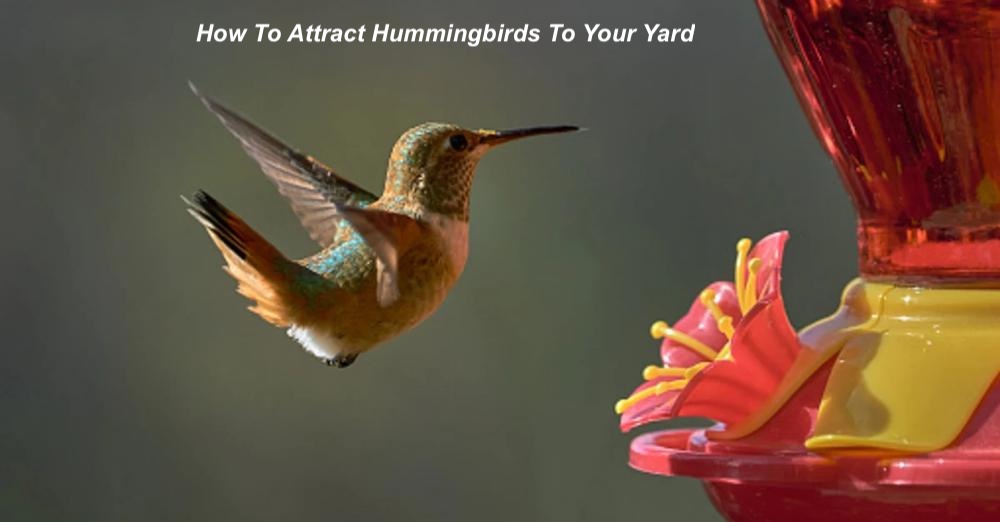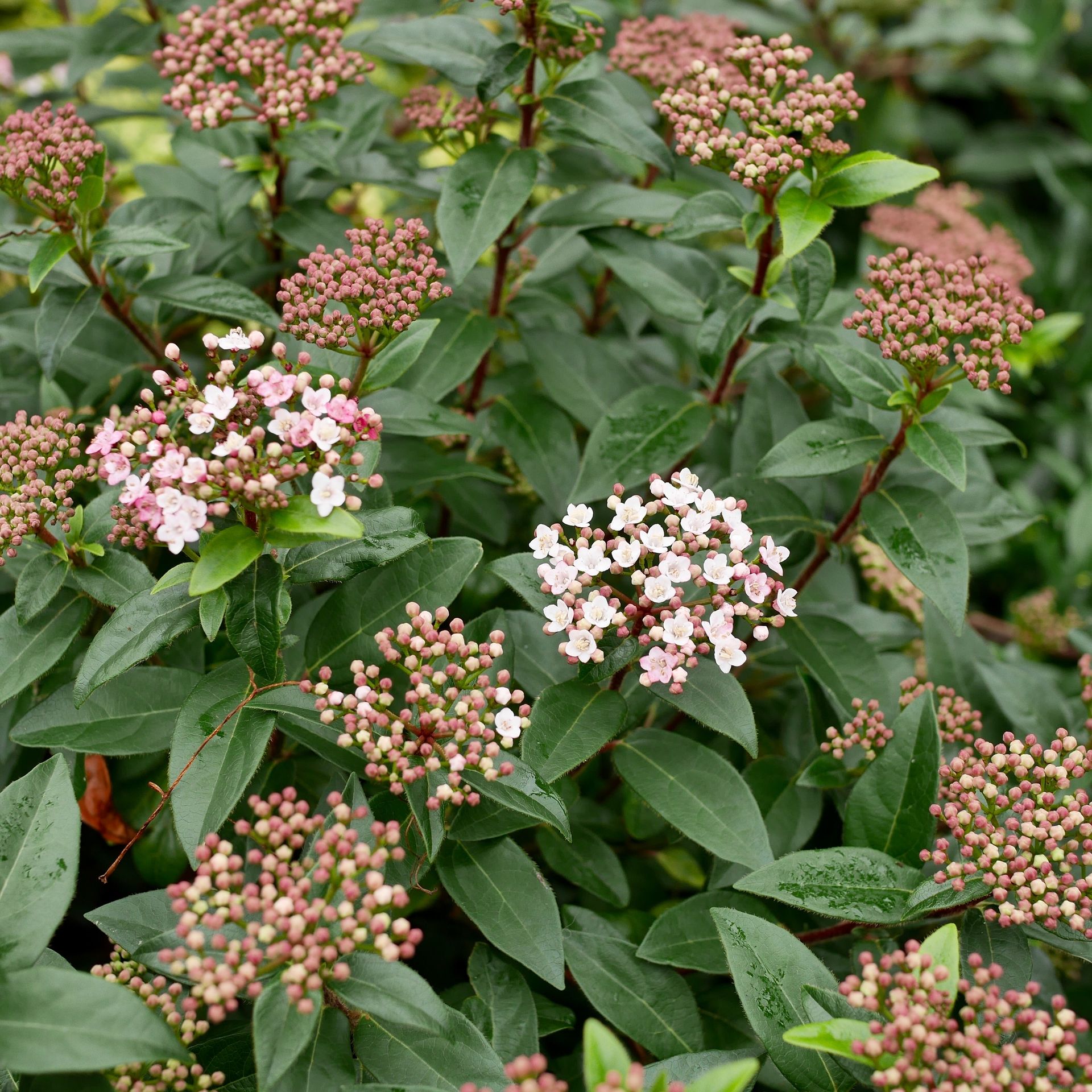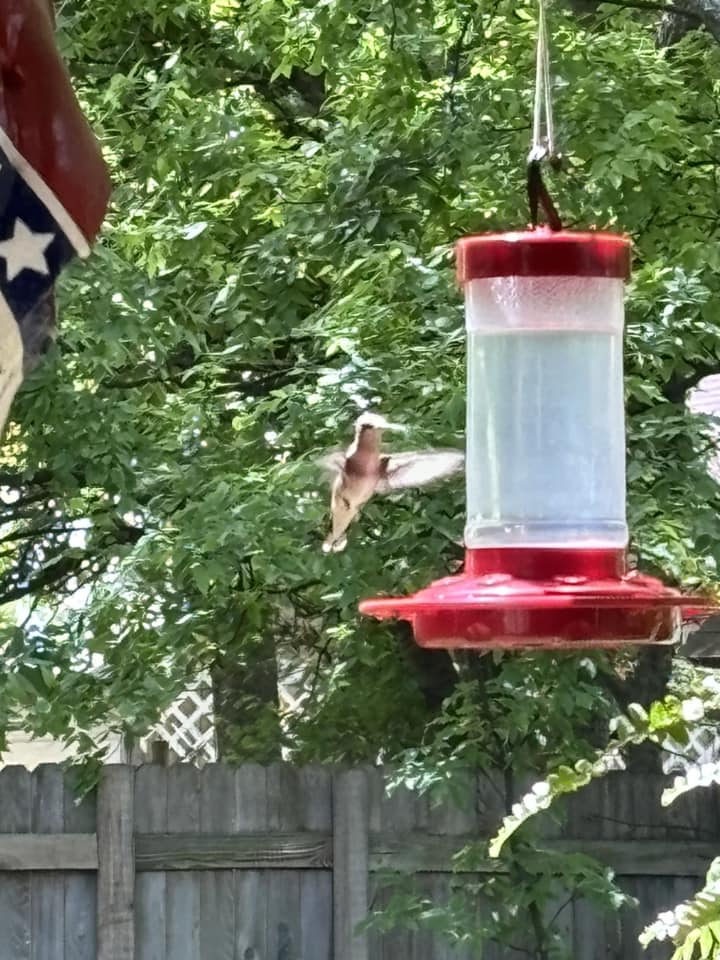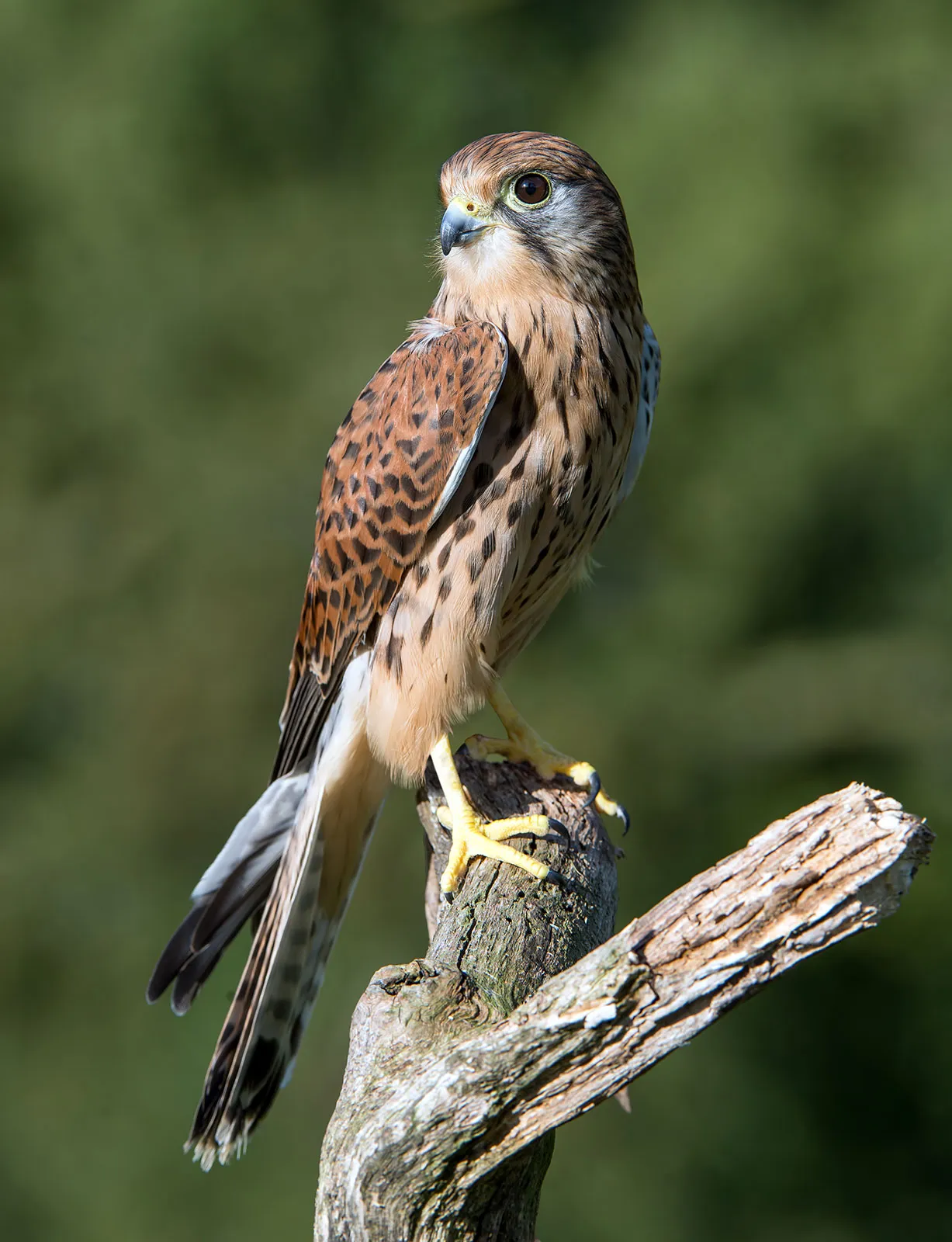Enjoy the mesmerizing dance of hummingbirds, their iridescent plumage, and the way they flutter around with astonishing speed right from the comfort of your home. Whether you enjoy birdwatching, are looking to attract pollinators, or add some color and live to your yard, hummingbirds are a joy to have.
The question is: how do you attract hummingbirds to your yard? You are in luck. This post explores the different ways to make your yard a hummingbird haven.
With the right approach, attracting these splendid birds is surprisingly simple. Discover what to do below.
How To Attract Hummingbirds To Your Yard
Here is how you can attract hummingbird to your yard:
1. Plant Hummingbird-Friendly Flowers
Hummingbirds absolutely love nectar! In fact, nectar is their primary source of food. This means they naturally gravitate toward flowers, especially brightly colored flowers with tubular shapes, which provide easy access to nectar.
Plant brightly colored flowers that bloom at different times for a continuous supply of nectar. Excellent choices include trumpet vine, salvia, bee balm, cardinal flower, coral honeysuckle, scarlet gilia, Fuschia, columbine, lantana, and penstemon.
When selecting plants for your yard, do not forget to incorporate some native plants. This will ensure you create a beautiful and biodiverse habitat that attracts hummingbirds and supports diverse native wildlife.
Since native plants have evolved alongside the local wildlife, these plants provide nesting sites, essential habitats, and food sources for native wildlife. Position plants in clusters to make it easier for hummingbirds to find and access the nectar-rich flowers.
Read More:
- Perennial Flowers That Attract Hummingbirds and Butterflies
- How To Attract Dragonflies To Your Yard For Mosquito Control
2. Incorporate Shrubs and Trees
Planting shrubs and trees in your yard offers protected and secluded spots for hummingbirds to roost and nest. Being territorial creatures, hummingbirds prefer to feed and nest at different heights within the canopy. Therefore, create a layered habitat by incorporating shrubs and trees of varying heights.
Tall trees like oaks, maples, and pines provide overhead cover and nesting sites. On the other hand, smaller shrubs and bushes such as viburnums, dogwoods, and serviceberries offer lower-level perches and feeding opportunities.
Moreover, incorporate dense, evergreen shrubs and trees with thick foliage since hummingbirds usually build their tiny nests using soft, fibrous materials like plant down, moss, and spider silk. Also, do not prune shrubs and trees during the breeding season so you don’t disturb nesting birds.
3. Set Up Nesting Boxes
Besides shrubs and trees, install nesting boxes to give hummingbirds additional places to nest in your yard. Find them at garden centers, bird specialty stores, and online retailers, or consider building your own.
Position nesting boxes in quiet, secluded areas, away from disturbances and high-traffic spots. For instance, do not place your nesting boxes close to trees because they can impede their flight path.
4. Provide Perching Spots
Install human-made structures such as trellises or wooden dowels in your yard to create convenient spots for hummingbirds to rest between feeding flights. Place perches near feeding stations, nesting areas, and water sources.
Alternatively, hummingbirds can perch in the trees with dense foliage and sturdy branches. Ideal perching spots for hummingbirds are sheltered and shaded to offer protection from the elements.
5. Hang Hummingbird Feeders
Supplement the nectar from flowers by installing hummingbird feeders in your yard. Choose easy-to-clean and refill feeders with bright colors to capture the hummingbirds’ attention.
After getting your feeders, fill them with a sugar-water solution that you can easily prepare by mixing sugar with water, boiling it, and then letting it cool. Don’t use food coloring, honey, or artificial sweeteners to make sugar solutions since these substances can harm the birds.
Also, do not feed bread, nuts, birdseed mixture, salt, honey, food scraps, or alcohol to them. Hang several hummingbird feeders far apart in areas with good visibility, away from obstacles. Place the feeders in shaded areas to avoid fermentation of the sugar solution.
Also, regularly clean them with hot water and mild detergent, rinse them thoroughly, and refill them with fresh nectar to avoid mold and bacteria.
6. Offer a Water Source
Whether it’s a birdbath, dripping fountain, or misting system, a water feature will make your yard a welcoming environment for hummingbirds. These enchanting birds enjoy bathing.
They are famous for flying through water droplets or splashing in shallow water sources. Besides bathing, hummingbirds also need drinking water.
Keep the water source clean and well-maintained to prevent the growth of algae, mold, and bacteria. Regularly scrub birdbaths and dishes with a mild detergent and rinse them thoroughly with clean water.
In addition, keep the water fresh and inviting to hummingbirds by frequently replacing it.
7. Embrace Red
Hummingbirds love bright, vibrant hues, but red is their favorite color. Therefore, embrace red to attract these birds. Apart from planting red flowers and plants that produce red fruits and berries, incorporate red elements into your landscaping, decor, and plantings to catch the attention of passing hummingbirds.
For instance, opt for hummingbird feeders with red accents or entirely red, and use red decor elements such as red garden flags, wind chimes, or hanging ornaments. You can also paint structures like trellises, arbors, and garden benches in shades of red to make them stand out.
Moreover, consider hanging red ribbons or windsocks. The fluttering motion of these red decorations mimics the movement of flowers in the breeze and could entice hummingbirds to investigate further.
8. Keep Predators Out
Despite being agile flyers, hummingbirds are still vulnerable to predators such as birds of prey like falcons, snakes, praying mantises, spiders, and domestic cats. Therefore, hummingbirds will avoid visiting your home if predators lurk on your property or let your cats and dogs outdoors.
So, what’s the solution to this issue? Below is how to make your yard safe for hummingbirds.
- Limit the time your cat or dog spends outdoors to when you can keep an eye on them or the hours hummingbirds are less likely to come around. Also, you can keep them indoors entirely.
- Do not position hummingbird feeders too close to the ground or potential hiding spots for predators, such as dense shrubbery, trees, or structures.
- Install predator guards on feeder poles or hanging hooks to deter climbing predators. Alternatively, look for feeders with built-in features to deter predators like bee guards or ant moats.
- Deter predators with motion-activated devices such as sprinklers, lights, or noise makers.
- Set up vantage points for hummingbirds like tall branches and perches. This will give these birds space to monitor their surrounding for predators.
9. Avoid Pesticides
Pesticides, including insecticides, herbicides, and fungicides, are detrimental to hummingbirds. For example, pesticides can kill insects like mosquitoes and gnats, which provide proteins to hummingbirds.
The chemicals can also contaminate the nectar if you spray pesticides on or near flowering plants. Moreover, ingesting pesticides or contaminated insects can poison hummingbirds, leading to illness or death.
Due to these adverse effects, creating a pesticide-free yard is paramount. Here’s how to achieve this:
- Embrace organic gardening practices that promote biodiversity, build healthy soil, and natural pest control. For instance, adopt composting, mulching, crop rotation, and organic fertilizers.
- Plant native plants because they perfectly suit the local growing conditions. They also have built-in defenses against diseases and pests, thus minimizing the necessity for chemicals.
- Manage pest problems with integrated pest management techniques. This approach involves monitoring pests, using mechanical and cultural controls, and only using pesticides as a last resort and in targeted applications.
- Tackle pests using natural methods like handpicking, companion planting, using neem oil, insecticidal soap, and diatomaceous earth, setting physical barriers, and attracting birds and beneficial insects.
10. Supply Fruit
Nectar is an obvious hummingbird treat, but there are other sweet treats they like, including fruits. So, consider leaving fruits around to attract these birds to your yard. Make the fruits more enticing to hummingbirds by choosing chopped or broken ripe or overripe fruits.
Favorite choices include pears, berries, watermelons, and oranges. Ripe fruits do more than provide hummingbirds with sugary treats; they also attract fruit flies that these birds can add to their diet.
11. Maintain A Clean Yard
A clean yard provides a safe and inviting habitat, free from hazards, contaminants, and disease vectors. In that case, promptly remove spoiled or moldy food from feeders or bird baths to prevent diseases and unwanted pests.
Furthermore, keep your yard free from clutter, debris, and overgrown vegetation that can harbor pests and provide hiding spots for predators. Regularly rake up fallen leaves, prune overgrown shrubs and trees, and remove dead branches and plants.
Also, keep the feeders and water sources clean, as mentioned earlier.
12. Be Patient
Just because you have done everything to make your yard enticing and friendly to hummingbirds doesn’t mean they will move in immediately. These birds are territorial, so it may take some time for them to get accustomed to new feeding stations and habitat features in your yard. Due to this, you must be patient.
Conclusion
With easily achievable changes, you can tempt hummingbirds to visit your yard whether you are a novice or season bird enthusiast. Make sure there’s a steady supply of nectar, water, ideal nesting areas, and perching spots. In no time, these enchanting birds will dazzle you with their elaborate aerial display, humming sound, and vibrant plumage.

Hey there, I’m Derek Schew, a writer for Lawnholic.com, where we cover everything and anything related to lawns. As someone who’s spent countless hours tending to my own lawn, I’m passionate about sharing my knowledge and helping others achieve the perfect yard. From lawn care tips to product reviews, I’m committed to providing our readers with the most accurate and up-to-date information available. So whether you’re a seasoned lawn enthusiast or just getting started, I invite you to join our community and discover the joys of a lush, green lawn.







